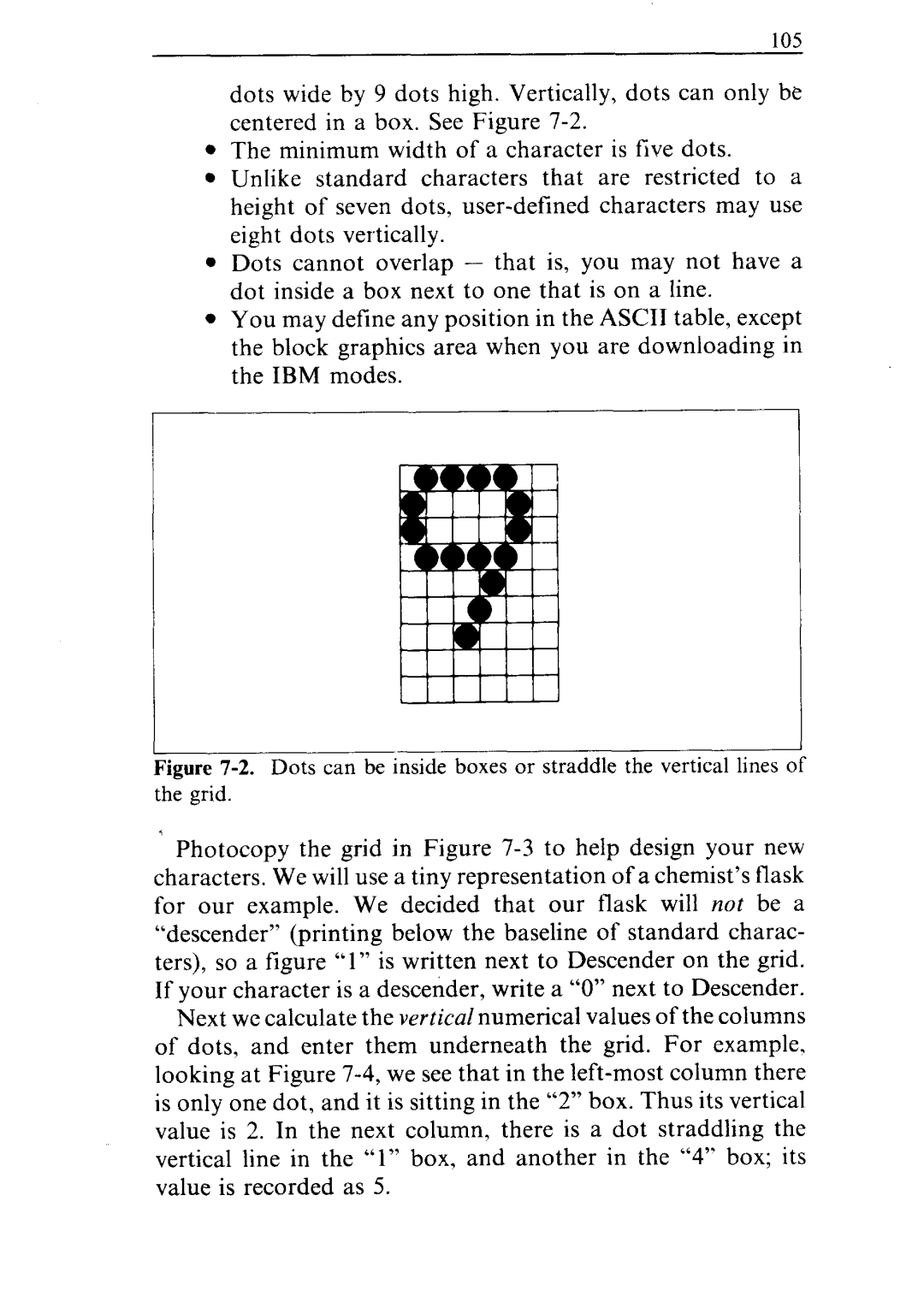
105
dots wide by 9 dots high. Vertically, dots can only be centered in a box. See Figure
•The minimum width of a character is five dots.
•Unlike standard characters that are restricted to a height of seven dots,
•Dots cannot overlap - that is, you may not have a dot inside a box next to one that is on a line.
•You may define any position in the ASCII table, except the block graphics area when you are downloading in the IBM modes.
| __. | . | J |
Figure | . . . . | ||
Dots can be inside boxes or straddle | the | vertical lines of | |
the grid. |
|
|
|
Photocopy the grid in Figure
Next we calculate the vertical numerical values of the columns of dots, and enter them underneath the grid. For example. looking at Figure
